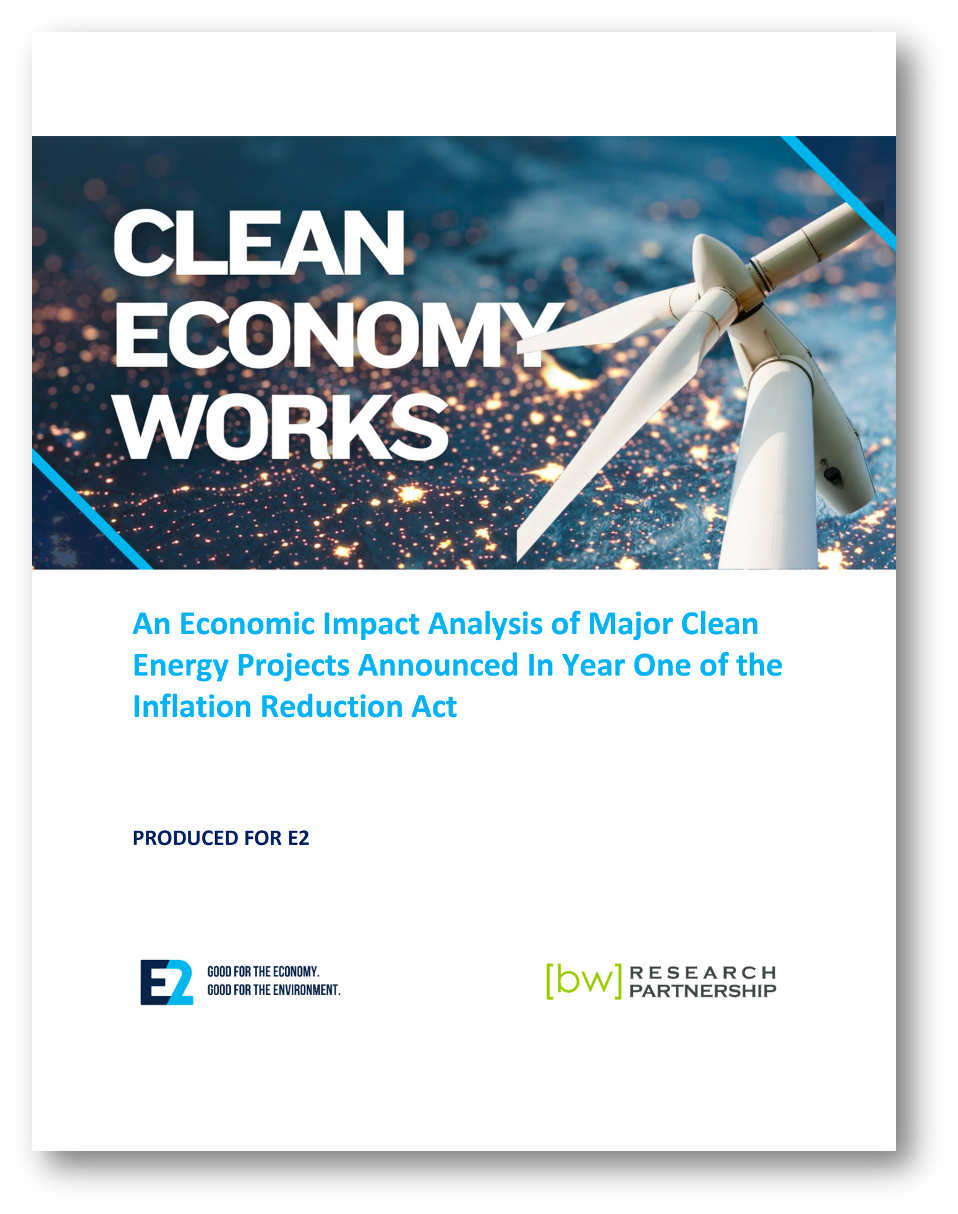Summary:
This analysis uses the original $86 billion in estimated capital expenditures that companies announced in investments for new developments and extrapolates another $20 billion in additional capital expenditures for project announcements that did not include a dollar amount or required an updated estimate based on available information. In addition to the direct benefits of these expenditures, new modeling from BW Research measures the broader economic benefits and the multiplier effect of the investments and jobs expected if the 210 announced projects were completed over the next five years.
When these broader economic benefits are factored in, BW’s modeling expects 403,000 new jobs—including nearly 100,000 permanent jobs—would be created and supported throughout the economy, $156 billion added to U.S. GDP, $111 billion in new wages for workers, and more than $32 billion generated in tax revenue for federal, state, and local governments. These benefits will continue long after the projects are built. For more details, see Key Findings below.
These secondary economic benefits are far-reaching. When new clean energy projects and clean vehicle factories and thousands of new jobs come to a community, local restaurants sell more meals. Schools, police departments and local public works projects benefit from increases in local tax revenues. Local manufacturers and wholesalers sell more goods to feed the growing local supply chain. And small businesses such as accounting firms, construction contractors, landscaping companies and caterers see new revenue streams.
Together, these direct and indirect jobs and investments tell a nationwide story of opportunity for domestic manufacturing, clean energy production, transportation and infrastructure modernization and American ingenuity, thanks to the clean energy incentives and investments made possible by the IRA.
They are also just the beginning as E2 continues to track new projects being announced every month

Key Findings
This modeling shows that (if all projects are completed) the 210 major projects tracked by E2 between August 2022-August 2023 will create or support more than 400,000 jobs, including 303,500 construction jobs each year during construction and another 99,600 jobs each year after that.
These private-sector investments and jobs will add $155.5 billion to the nation’s GDP while the projects are under construction, and another $13.1 billion annually once they are up and running.
Additionally, these projects will result in $32.5 billion in new tax revenues for federal, state, and local governments while under construction, and an additional $2.9 billion annually after that.
COMBINED JOBS, WAGE, TAX AND GDP IMPACTS OF MAJOR CLEAN ENERGY PROJECTS ANNOUNCED IN FIRST YEAR OF THE IRA

TOTAL INVESTMENTS INTO AND ANNUAL JOBS SUPPORTED BY CLEAN ENERGY PROJECTS, DETAILED BY ENERGY SECTOR
| Sector | Total Construction Phase Jobs (Annual jobs for 5 years) | Annual Operations Phase Jobs (Annual jobs for lifetime of projects) | Sector | Announced Capital Investment ($billions) | Extrapolated Capital Investment ($billions) | Total Capital Investment ($billions) | Annual Operational Investment ($billions) | |
| Solar | 35,054 | 12,139 | Solar | $10.21 | $1.94 | $12.15 | $1.35 | |
| Wind | 7,046 | 5,933 | Wind | $1.64 | $1.18 | $2.82 | $0.76 | |
| EV | 185,673 | 54,500 | EV | $56.06 | $5.52 | $61.58 | $6.16 | |
| Electric T&D | 5,565 | 2,035 | Electric T&D | $1.46 | $0.51 | $1.97 | $0.27 | |
| Battery Storage | 48,795 | 13,633 | Battery Storage | $12.19 | $5.61 | $17.80 | $1.90 | |
| Clean Fuels | 21,322 | 11,342 | Clean Fuels | $5.09 | $4.99 | $10.08 | $0.83 | |
| Total | 303,455 | 99,584 | Total Capital Investment | $86.66 | $19.74 | $106.40 | $11.27 |
Methodology
This analysis provides a thorough economic prediction of the impacts of the 210 announcements by filling in the gaps of publicly announced information. Modeled impacts differ from initial estimates offered by companies announcing new projects, tracked by E2. Fifty-six of the 210 announcements provided no capital investment estimate and sixty-eight provided no job creation estimate. Additionally, those estimates were inconsistently defined, lacking clarity on if they are direct jobs only or direct, indirect, and induced jobs, and if they were for construction or permanent positions.
To analyze these economic impacts from the clean energy programs and policies in the IRA, BW Research used IMPLAN economic modeling software to estimate the overall economic benefits from publicly sourced clean energy project announcements. BW Research developed a dozen economic impact models in total to represent six tracked sectors: Solar, Wind, Electric Vehicle (EV), Electricity Transmission & Distribution (Electric T&D), Battery Storage, and Clean Fuels. Based on this common methodology and assumptions, BW generated outputs at the national level, including earnings, tax revenue, employment and overall GDP value add.
For more information on methodology, see Appendix B in the report. For the list of all 210 projects tracked by E2 in the first year of the IRA, see Appendix C.
For the latest full list of clean energy job announcements tracked by E2, visit https://e2.org/announcements.
About E2
E2 is a national, nonpartisan group of business leaders, investors, and professionals from every sector of the economy who advocate for smart policies that are good for the economy and good for the environment. E2 members have founded or funded more than 2,500 companies, created more than 600,000 jobs, and manage more than $100 billion in venture and private equity capital.
For additional insight into E2’s other reports, visit e2.org/reports.
Related Resources
- Clean Jobs America 2023 (Sept. 2023)
- Clean Economy Works | IRA One-Year Review (August 2023)
- Billion Dollar Losses, Trillion Dollar Threats: The Cost of Climate Change (Oct. 2022)
- Clean Jobs, Better Jobs: An examination of clean energy job wages and benefits (Oct. 2020)
- Build Back Better, Faster: How a federal stimulus focusing on clean energy can create millions of jobs and restart America’s economy (July 2020)
- Help Wanted: Diversity in Clean Energy (Sept. 2021)
